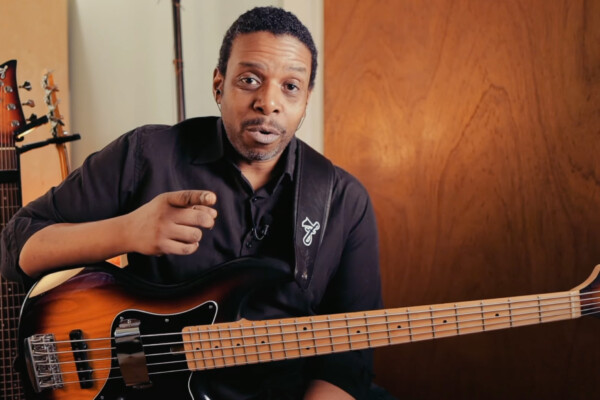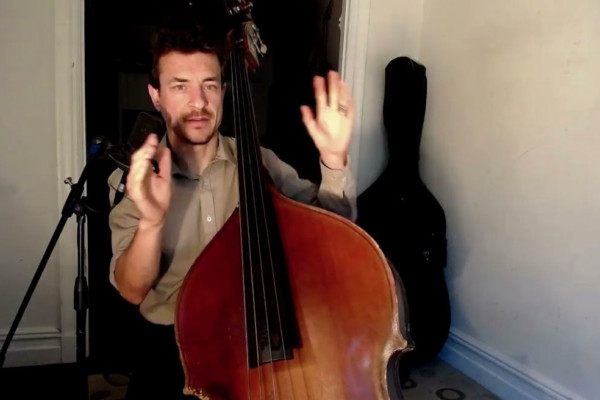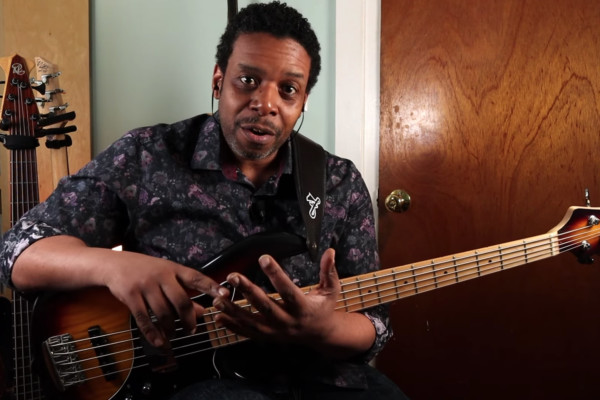Reading Complex Rhythms
Q: I’ve only been playing bass about 1.5 years – still a newbie trying to learn the tricks of the trade. I mostly learn a song and play basic, but as of late, I’ve been learning to read. I’m not fluent in reading, but that’s not my problem. My problem is trying to play the rhythm of the notation. I been trying to just play the rhythm of the notation on one note to get a idea of how it should groove, I’m just not catching it. I can play the simple straight notes, it’s the more “complex” stuff I’m lost. Is there a method of counting the beats per measure/bar that I can practice to get a strong sense of rhythm notation? Any advice would be appreciated.
A: Indeed, rhythmic reading chops are separate from note reading chops. Many players tend to feel more comfortable with one or the other. I’ve worked pretty hard at both but let’s focus on the rhythm here, as it pertains to your question.
The best method is whichever method works for you, but I’ll tell you what works for me and what I tell my students when working through more complex rhythmic notation.
There are two things I’ll talk about here:
1. Keep track of where the downbeats are in a bar.
Many of my students start to get anxious when a line gets hyper-rhythmic, especially if it’s loaded with 16th rests, etc.. Often times, this leads to the student jumping ahead and/or guessing at the rhythms.
In order to keep your place (or when you are just working through a song slowly and figuring out the rhythms one-by-one), I’ve found that mentally marking every downbeat gives me a foundation in the time and then I can focus on the appropriate subdivisions between the beats from there.
When working through music years ago, I used to use a pencil and mark every downbeat in a measure, and then focus on what is happening in between downbeats.
Which leads us to sub-divisions!
2. Whether you are playing or reading rhythmic music, having a solid grip on subdivisions is key.
You might also check out this column I wrote in 2015 about developing a strong sense of time.
Also included here are some PDFs and audio tracks (see below). One is a song of mine and it’s accompanying chart. This track is very heavy on the triplets and fairly advanced. While it might be a bit much for some of you, it’s a perfect way to explore rhythms on paper and try and map them out.
The thing here is to focus on the triplet subdivision and try and emphasize my odd phrasing of this grouping of 3. The main rhythm is 8th note triplets (3 pulses per beat), but instead of 4 groups of 3, I phrased the line in 3 groups of 4:
123 123 123 123 – Accents on the downbeat, 2nd triplet of beat 2 and 3rd triplet of beat 3.
The time is a little deceiving at the top of the tune because it starts with the guitar playing those downbeats with no reference for where the pulse actually is. It’s easier to feel once the band comes in.
The second is a worksheet I made specifically for this article focusing on subdivisions with an accompanying audio track of the rhythms against a click.
I’ve made it my goal to internally feel every subdivision as strongly as I can feel the downbeats. For me, this was the only way to truly have confidence in my placement of notes.
This worksheet works pretty systematically through groupings of 2 and 3 (16th notes and triplets). Example 1 starts with quarter notes and 8th notes, so you can feel the pulse and then the pulse doubled.
Then we get to work through all 4 subdivisions of the beat when playing 16th notes (4 rhythms per beat, 16 per bar of 4/4). The important thing is to try and feel the pulse during the rests. Don’t guess at the note placement but rather feel all 4 pulses but only actually play the appropriate subdivision.
I then mix and match rhythms just a little bit before giving some triplet examples (3 pulses per beat = 8th note triplets).
This ends with 2 examples of mixed 16th notes and 8th note triplets. This is the real test. If you can alternate between groupings of 2 and 3 with confidence, then you know that you are well on your way!
I would suggest picking up a book of snare drum rudiments and practice patterns. I’ve found that the best way to focus on rhythm is to try and practice like a drummer!
I will often then start to apply harmonic exercises to my rhythmic exercises to try and use them in a musical context (there is a PDF of the article I linked to above where I give some examples of this, taken from one of my books).
When working on stuff like this, I like to take each step slowly and make sure that I’ve really got it before adding any complexity. If you need to work on that 1st line of quarter and 8th notes for a week, then do it. Don’t worry about how fast or slow you’re going, as long as you are hearing and feeling the rhythms and playing them well before moving on. Take each exercise as slowly as is necessary to play it well before speeding up.
I like to think of rhythm as a grid and to make sure that I can ‘lock into the grid’ when playing various subdivisions (actually, using graph paper can be really helpful when mapping out rhythms).
Feel free to make any further suggestions or ask any questions in the comments below and I’ll respond asap! Rhythmic workouts can be a LOT of fun and really working on your control of rhythm is immensely helpful to your time-feel.
Keep in mind that music isn’t necessarily metronomic and usually feels better if your phrasing is natural and not square. That said, having actual control of your playing and rhythm is key. You need to develop real control of your body and instrument before you can dive deeper into the time-feel stuff.
Worksheets and audio tracks:
Stumptown Stumble:
Audio track:
Working on Subdivisions:
Audio track:
Have a question for Damian Erskine? Send it to [email protected]. Check out Damian’s instructional books, Right Hand Drive and The Improviser’s Path.




Hete ya go: https://youtu.be/8Sw_trDFJw8